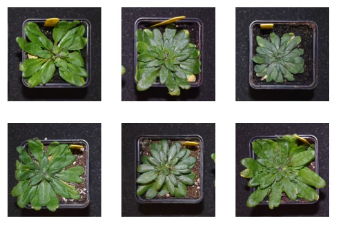VIB researchers uncover key genetic pathway in leaf development
The cell cycle inhibitor SIAMESE-RELATED1 (SMR1) plays a crucial role in how leaves adapt to the environment
The surface of a leaf is composed of diverse cell types that are remarkably well-balanced and organized. The team of Prof. Lieven De Veylder (VIB-UGent Center for Plant Systems Biology) and colleagues from the University of Sheffield have made a significant breakthrough in understanding the development of leaf epidermis. The study, published in Nature Plants, could pave the way to more climate-resilient plants.
Building a leaf
The surface of a leaf (the leaf epidermis) plays a crucial role in maintaining water balance, facilitating gas exchange, defending against pathogens, and protecting underlying cells. To perform all those functions, the leaf epidermis is a tissue that consists of various cell types, such as trichomes, stomata (specialized cellular pores), and protective pavement cells.
Stomata and pavement cells can differentiate from the same stomatal lineage ground cells (SLGC). The ratio of stomata and pavement cells is an important factor in determining how well a plant can deal with drought. While previous research has provided many insights into how these different cell types are formed and work together, the genetic pathways responsible for pavement cell differentiation have remained largely unknown. A new study by Dr. Marieke Dubois and colleagues in the lab of Prof. Lieven De Veylder (VIB-UGent Center for Plant Systems Biology) now lifts the veil.

From ground to pavement to climate resilience
Using mutant Arabidopsis plants, the team discovered that the cell cycle inhibitor SIAMESE-RELATED1 (SMR1) is vital for the timely differentiation of SLGCs into pavement cells. In other words, SMR1 stops the stomatal lineage ground cells from renewing, and pushes them to differentiate into pavement cells.
By modulating SMR1 expression and, thereby, the stomata-to-pavement cell ratio, researchers adjust leaf development so that leaves become better suited to changing environmental conditions. For example, by increasing the ratio of pavement cells to stomata, one can control water loss through evaporation, which is particularly relevant in the face of drought and other climate-related challenges.
Dr. Marieke Dubois: "We've found a previously unexplored genetic pathway that determines the pavement cell identity in the leaf epidermis. By identifying SMR1 as a critical regulator in the differentiation process, we can start to fine-tune stomata numbers in leaves, which will open up new possibilities for engineering climate-resilient plants."
Prof. Lieven De Veylder agrees: "By targeting SMR1 researchers can develop the tools to enable strategies that enhance the resilience of crops and improve agricultural sustainability."

Publication
SIAMESE-RELATED1 imposes differentiation of stomatal lineage ground cells into pavement cells. Dubois et al. Nature Plants, 2023.
Steve Bers



